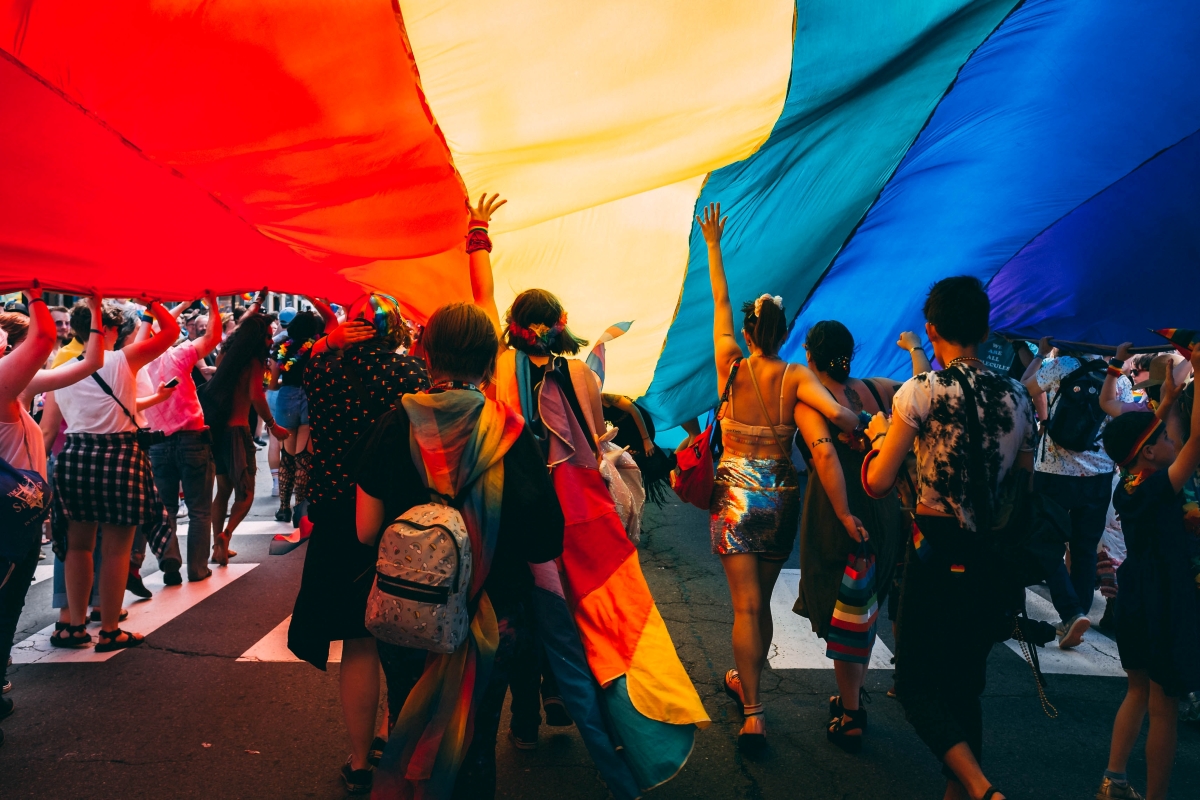What is queerbaiting, anyway?

Although the term “queerbaiting” has murky origins in the heyday of early-aughts online fandom culture, it’s become a mainstay, not just in the dreaded discourse, but in conversations about real-life people. Most recently, you may have heard the term applied to Harry Styles, whose queer aesthetics have been either lauded or criticized, depending on who’s talking about them; or Heartstopper star Kit Connor, who said he felt forced to come out as bisexual after fans of the Netflix series accused him of queerbaiting when he was seen holding hands with a woman.
But what exactly is queerbaiting? Where did it come from? And why are people applying the term not just to fiction, but to people in real life?
Queerbaiting, explained
Dictionary.com defines queerbaiting as “the practice of implying non-heterosexual relationships or attraction (in a TV show, for example) to engage or attract an LGBTQ audience or otherwise generate interest without ever actually depicting such relationships or sexual interactions.” You might recall TV shows like Teen Wolf, Supernatural, and BBC’s Sherlock, or any number of characters and relationships from the Marvel Cinematic Universe constantly being discussed through this lens.
Under this definition, any fictional relationship wherein two characters appear to have non-heterosexual romantic or sexual chemistry can be called queerbaiting. This makes the term largely subjective, though that doesn’t stop people from asserting it as an objective fact—even when it comes to real-life people whose personal lives and relationships have bigger stakes than those in fiction.
Although the actual term “queerbaiting” is relatively new, its history—in the U.S., at least—stretches for nearly a century. In 1929, Hollywood introduced the Hays Code, which effectively made it illegal to portray queerness, sex, or nudity on film. This list of principles was strictly enforced until the MPAA film rating system we know today was introduced in 1968, and in order to abide by it, filmmakers could only hint at non-heterosexual relationships or characters. Plus, its replacement didn’t end Hollywood’s fear of or hatred for queerness; seeing LGBTQIA+ characters on TV or in film remained a rarity up until the last few decades.
Why queerbaiting and accusations of queerbaiting are so volatile
As LGBTQIA+ representation becomes more common in all types of media, including TV and film, creators and fans alike are eager for better representation that doesn’t utilize harmful tropes. This seems to have led to an uptick in accusations of queerbaiting, as characters who embody queer aesthetics or stereotypes, and relationships between characters that could be romantic or sexual no longer have to remain “in the closet,” so to speak. On one hand, this is a good thing—demanding more and better representation for LGBTQIA+ folks in popular media is essentially asking for the bare minimum.
On the other hand, accusations of queerbaiting have certainly gone too far when they are used against real-life people whose lives aren’t created by a writers’ room or an author. Although celebrities have public personas which are in some ways more accessible than ever thanks to social media, they also have private lives that aren’t meant for mass consumption—and whether someone chooses to openly identify as queer is a personal decision they should be allowed to make on their own, without being accused of queerbaiting.
(featured image: Mercedes Mehling, Unsplash)
Want more stories like this? Become a subscriber and support the site!
—The Mary Sue has a strict comment policy that forbids, but is not limited to, personal insults toward anyone, hate speech, and trolling.—
Have a tip we should know? tips@themarysue.com